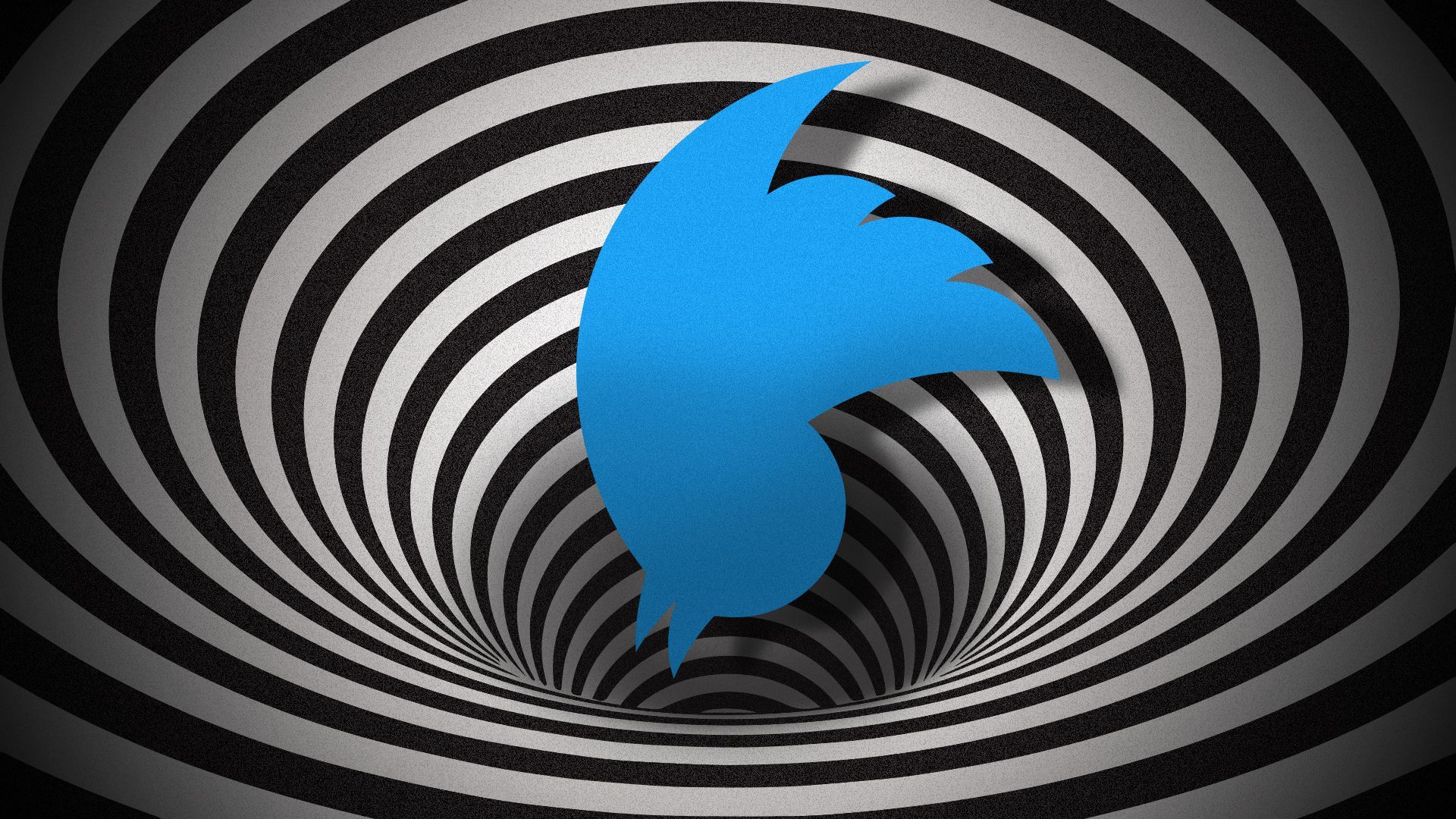Twitter fueled run on Silicon Valley Bank, new paper finds
Illustration: Shoshana Gordon/Axios
Which came first, the tweets or the bank run? A new paper finds evidence that tweets — particularly from those in the startup community— exacerbated the run on Silicon Valley Bank last month.
Why it matters: Social media-fueled bank runs — SVB's collapse was the first — are a new risk to the financial system, and regulators don't know yet how to manage them. Research like this helps us understand the phenomenon.
- The research, from five finance professors in the U.S. and Europe, is the first large-scale academic attempt to answer a question hanging over the bank's failure in March: Were all the tweets about SVB merely reflecting something happening in the real world — or did they amplify and worsen the situation?
Catch up fast: Depositors withdrew $42 billion in a single day from SVB, the largest bank run in history and one that no bank — no matter how well-fortified — could likely withstand.
- As Janet Yellen said last month: “No matter how strong capital and liquidity supervision are, if a bank has an overwhelming run that’s spurred by social media so that it’s seeing deposits flee at that pace, a bank can be put in danger of failing."
- Leading up to the bank run, some influential members of the Silicon Valley startup community — which made up a big chunk of SVBs depositors — freaked out about the bank on Twitter, spreading panic.
Zoom out: In the past, experts studying bank runs often discussed what would happen if depositors could truly coordinate, Christoph Schiller, a finance professor at Arizona State University, who coauthored the paper, told Axios. Previously, "that was a difficult thing to do."
- Even if panicky messages were coming from a radio or a TV broadcast, that's more of a one-way communique. Social media changes the game.
- That's why the SVB run is more than just an interesting news event, he says.
What they did: The researchers examined a database of all tweets both in the months before the run on SVB and during the run period itself — which they define as March 1 to March 14.
- Using an algorithm, they sorted out tweets that had to do with the banks they were interested in.
- They also coded tweets as positive or negative, based on key words like "run" and "withdraw," and tracked who was doing the tweeting — identifying if someone was in the startup world.
- Finally, they classified banks as having high or low bank-run risk, based on the percentage of uninsured deposits and their mark-to-market losses.
What they found: Negative tweets have a negative effect on bank returns, especially if tweets came from a member of the startup community.
- "The intensity of Twitter conversation about a bank predicts stock market losses," when looking at stock prices an hour before and after the tweets, they write.
- If you look at an even higher frequency — 10 minutes before and after — the effect holds, too.
- Importantly, the researchers also learned that the banks that had more Twitter activity in the months before the run period, experienced steeper stock losses during the run period.
Caveat: The researchers were not able to get data on deposit outflows for this period, so they're using stock prices as a sort of proxy. The two are likely highly correlated, Schiller said. They hope to examine outflows explicitly in future research.
The bottom line: The FDIC was created to deal with bank runs that take time to unfold — a la "It's a Wonderful Life" — not the kind fueled by ALL CAPS tweets written by investors. Policymakers are going to have to figure out how to deal with the new era of faster-moving crises.
Source: Read Full Article

